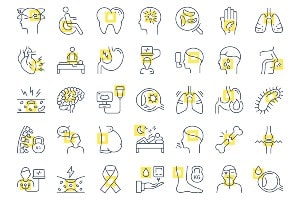About Sever Condition

Learn about the disease, illness and/or condition Sever Condition including: symptoms, causes, treatments, contraindications and conditions at ClusterMed.info.
Sever Condition

| Sever Condition |
|---|
Sever Condition InformationHow is Sever condition diagnosed?Sever condition is diagnosed by detecting the characteristic symptoms and signs above in the older children, particularly boys between 8 and 15 years of age. Sometimes X-ray testing can be helpful as it can occasionally demonstrate irregularity of the calcaneus bone at the point where the Achilles tendon attaches. What are signs and symptoms of Sever condition?Sever condition causes pain at the back of the heel. The pain is increased with plantar flexion of the ankle (pushing down with the foot as if stepping on the gas), particularly against resistance. Sever condition also causes tenderness and swelling in the area of the pain. What causes Sever condition?Sever condition is caused by sprain injury where the Achilles tendon attaches to the calcaneus bone at the back of the heel. What is Sever condition?Sever condition is an inflammation of the growth plate of the bone at the back of the heel (apophysitis of the calcaneus). The inflammation of Sever condition is at the point where the Achilles tendon attaches to the back of the heel bone. What is the prognosis of Sever condition?Sever condition is generally a self-limited problem that usually improves within a year. What is the treatment for Sever condition?When the condition flares, it is treated with activity limitation, medication to reduce inflammation (such as ibuprofen [Advil] or naproxen [Aleve]), shoe inserts, heel lifts, cold packs, and sometimes casting when it becomes especially severe. Who gets Sever condition?Sever condition occurs in adolescent or older children, particularly active boys. It can be very painful. It is one of those conditions commonly referred to as "growing pains." Patients are evaluated for signs of conditions that can mimic Sever condition, such as ankylosing spondylitis and other forms of arthritis. Usually Sever condition is self-limited; that is, it disappears as the child ages. |
More Diseases
A | B | C | D | E | F | G | H | I | J | K | L | M | N | O | P | Q | R | S | T | U | V | W | X | Y | Z
Diseases & Illnesses Definitions Of The Day
- Eating, Emotional (Emotional Eating) ‐ Emotional eating facts, How do health care providers diagnose emotional eating? …
- OTC Drugs for Constipation (Laxatives For Constipation) ‐ Are laxatives safe to take during pregnancy or while breastfeeding? …
- Hyopgonadism, Primary (Low Testosterone (Low T)) ‐ How do you know if you have low testosterone (Low-T)?, Should I take testosterone? …
- Poisoning, Ciguatera (Ciguatera Poisoning) ‐ What are the symptoms of ciguatera poisoning?, What is ciguatera poisoning? …
- Head and Neck Cancer ‐ Head and neck cancer facts*, How are head and neck cancers diagnosed? …
- XXY Males (Klinefelter Syndrome) ‐ Klinefelter syndrome facts*, Language development, Physical development …
- Devic's Syndrome ‐ How is neuromyelitis optica diagnosed?, Neuromyelitis optica facts* …
- Myocarditis ‐ How is myocarditis diagnosed?, What are symptoms of myocarditis? …
- Cancer of the Testis (Testicular Cancer) ‐ After testicular cancer has been diagnosed, tests are done to find out if cancer cells have spread within the testicles or to other parts of the body. …
- Chronic Rhinitis ‐ Chronic rhinitis and post-nasal drip definition and facts, Does salt water or nasal irrigation have any role in the treatment of rhinitis and post-nasal drip? …